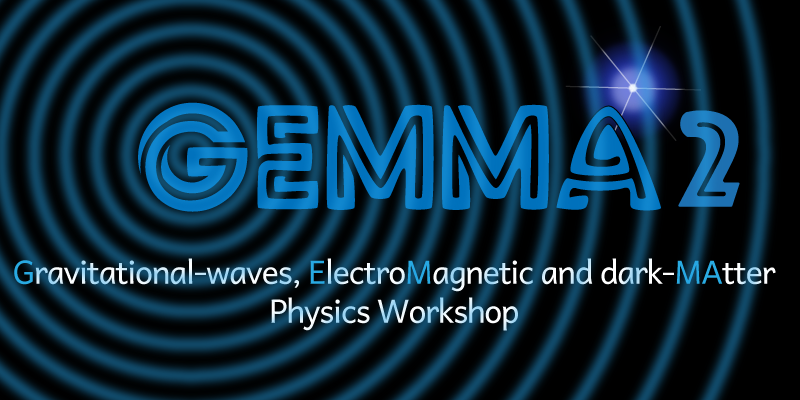I discuss the interplay between dark matter, black holes, and gravitational waves, and the prospects for characterizing and identifying dark matter using gravitational waves. I will present some new results on the detectability of dark matter overdensities around black holes in binary systems, and argue that future interferometers may enable precision studies of the dark matter distribution...
LISA, the space-based gravitational wave detector which was recently adopted, is due to fly in the mid 2030s. An entire new frequency range will be opened up for discovering gravitational wave sources, including intermediate and extreme mass ratio black hole binaries which will remain in band for up to weeks, months or even years. This offers an exciting new avenue for fundamental physics...
Primordial black holes are black holes that may have formed in the early Universe. Their masses potentially span a range from as low as the Planck mass up to many orders of magnitude above the solar mass. This, in particular, includes those black holes recently discovered by LIGO/Virgo, and these may conceivably be primordial in origin. Furthermore, there are now numerous recent hints for...
Black hole superradiance is a mechanism that allows a large cloud of ultralight bosons to grow around spinning black holes, simply through their gravitational interaction. The large amount of energy stored in these clouds is then typically dissipated through the emission of detectable monochromatic gravitational waves. I will focus on superradiance of vector fields that also couple...
An ultralight boson, with a mass smaller than 1 eV, emerges as an intriguing candidate for dark matter (DM). It behaves as classical waves within the Galaxy due to its large occupation number, and its frequency is determined by the boson's mass. Notably, these waves can induce oscillations in mirrors of gravitational-wave interferometers, and hence this type of dark matter can be searched for...
Next-generation gravitational-wave (GW) observatories will provide exquisite measurements of the merger rate of high-redshift binary black holes (BBHs), detecting many thousands of these systems every year. The abundance of these binaries is a direct tracer of the early stages of star formation, and therefore of cosmic structure formation. This raises the possibility of using GW observations...
Among various dark matter (DM) candidates, ultralight bosonic fields can be explored by using gravitational wave laser interferometers. For example, massive vector fields weakly coupled to the standard model particles yield oscillating forces acting on the test masses. In this context, KAGRA has a unique feature due to differing compositions of its mirrors, enhancing the signal of vector DM in...
Atom interferometers are a new class of quantum sensors capable of making precision measurements in many areas of fundamental physics including gravitational wave and ultra-light dark matter (ULDM) searches. While the sensitivity of atom interferometers to scalar ULDM has been established [arXiv: 1911.11755; arXiv: 2308.10731], spin-2 ULDM models are also well motivated but have yet to be...
Dark matter overdensities, called 'spikes', can be present around intermediate-mass black holes [1]. It has been suggested that these can be detected in the GW signal of an intermediate mass ratio inspiral (IMRI) composed of secondary black hole or neutron star orbiting the primary black hole, and interacting with the spike via dynamical friction. However, the standard treatment [2] does not...
Dark matter makes up a large portion of matter in the Universe and, thus, could be present inside compact objects such as neutron stars. Until today, little is known about its composition, fraction and particle mass. However, multi-messenger data, such as gravitational-wave as well as electromagnetic radiation, can in principle be used to study dark matter admixed neutron stars, which would...
The 21cm signal is a promising observable that has the potential to probe uncharted regions of our Universe, thereby presenting an opportunity to challenge the standard model and perhaps discover new physics. In this talk I will discuss how we can exploit the spatial fluctuations in the signal to study exotic models of dark matter. I will focus on two popular dark matter candidates, fuzzy dark...

